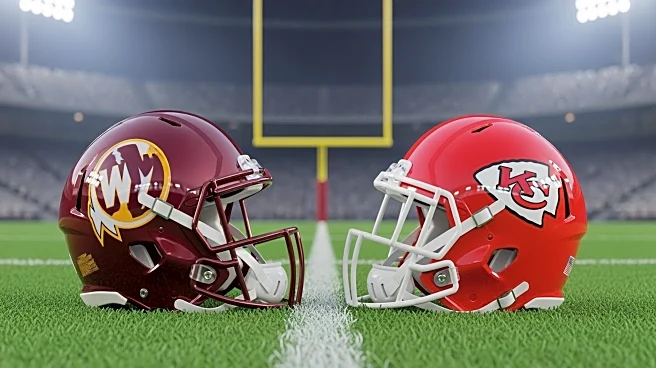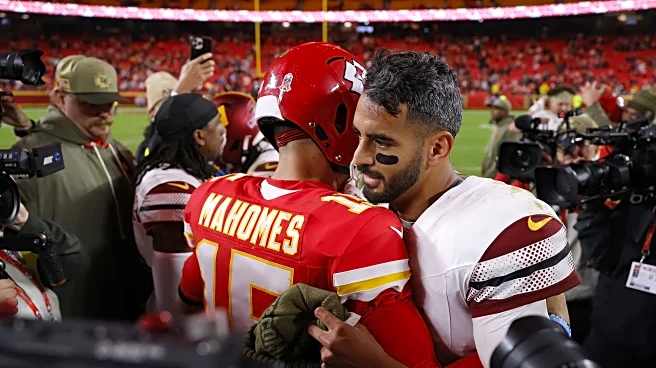What's Happening?
Week Eight of the NFL season has been marked by a significant lack of competitive games, with 11 out of 12 matchups decided by double-digit margins. This trend could culminate in a historical moment if the Commanders-Chiefs game also ends with a double-digit point
differential, making it the first time since 1970 that all but one game in a week were decided by such margins. The Chiefs are currently favored by 10.5 points. The only close game was between the Jets and Bengals, ending in a 39-38 victory for the Jets. However, this matchup was not particularly compelling, given the teams' poor records. The average margin of victory across the 12 games this week has been 18.25 points, highlighting a week of uncompetitive play.
Why It's Important?
The lack of competitive games in Week Eight raises concerns about the overall entertainment value and integrity of the NFL season. Such outcomes can affect fan engagement and viewership, as closely contested games typically drive higher interest and excitement. Teams and players may face scrutiny regarding performance and strategy, potentially impacting coaching decisions and player morale. Additionally, the league's reputation for providing thrilling sports entertainment could be challenged, influencing sponsorships and advertising revenue. Stakeholders, including team owners and broadcasters, may need to address these issues to maintain the league's appeal and financial health.
What's Next?
If the trend of uncompetitive games continues, the NFL may need to consider adjustments to scheduling or team matchups to ensure more balanced and engaging contests. Teams might reassess their strategies and player lineups to improve competitiveness. Fans and analysts will likely keep a close watch on upcoming games to see if this pattern persists, potentially influencing betting markets and fantasy sports participation. The league could also face pressure to enhance its product through rule changes or other measures to increase game excitement and unpredictability.
Beyond the Headlines
The current situation may prompt discussions about the broader implications of team parity and the effectiveness of the NFL's draft and salary cap systems in promoting competitive balance. Long-term, the league might explore initiatives to foster more evenly matched teams, ensuring that all franchises have the opportunity to compete at a high level. This could involve revisiting policies related to player development and resource allocation, aiming to create a more dynamic and engaging league for fans and stakeholders alike.














